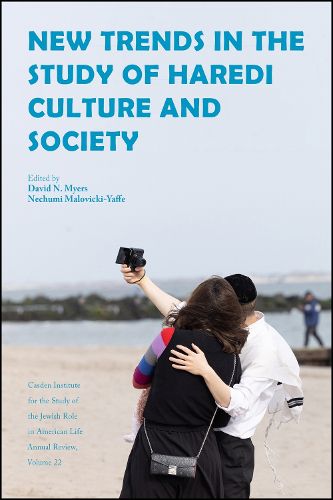Readings Newsletter
Become a Readings Member to make your shopping experience even easier.
Sign in or sign up for free!
You’re not far away from qualifying for FREE standard shipping within Australia
You’ve qualified for FREE standard shipping within Australia
The cart is loading…






Who are Haredim? And why are they the source of both increasing attention and continuing misunderstanding? New Trends in the Study of Haredi Culture and Society draws on the innovative research of leading scholars from a variety of disciplines-including history, religious studies, demography, linguistics, and geography-to trace the growing prominence of Haredi (often called ultra-Orthodox) Jews in Jewish life. Haredi Jews are committed to preserving a measure of segregation from the rest of society consistent with the guiding principles of their forebears; yet increasingly, they are appearing more visibly and assertively in public spaces. Demographic analysis suggests that they will constitute a much larger share-nearly one-quarter-of the world Jewish population over the next twenty years. By examining the evolution of political, cultural, and social trends in Haredi communities across the globe, this interdisciplinary and transnational volume sheds important light both on Haredi communities and on the societies of which they are part.
$9.00 standard shipping within Australia
FREE standard shipping within Australia for orders over $100.00
Express & International shipping calculated at checkout
Who are Haredim? And why are they the source of both increasing attention and continuing misunderstanding? New Trends in the Study of Haredi Culture and Society draws on the innovative research of leading scholars from a variety of disciplines-including history, religious studies, demography, linguistics, and geography-to trace the growing prominence of Haredi (often called ultra-Orthodox) Jews in Jewish life. Haredi Jews are committed to preserving a measure of segregation from the rest of society consistent with the guiding principles of their forebears; yet increasingly, they are appearing more visibly and assertively in public spaces. Demographic analysis suggests that they will constitute a much larger share-nearly one-quarter-of the world Jewish population over the next twenty years. By examining the evolution of political, cultural, and social trends in Haredi communities across the globe, this interdisciplinary and transnational volume sheds important light both on Haredi communities and on the societies of which they are part.